
The Pinacoteca di Brera is the main public gallery for paintings in Milan, Italy. It contains one of the foremost collections of Italian paintings from the 13th to the 20th century, an outgrowth of the cultural program of the Brera Academy, which shares the site in the Palazzo Brera.

Salome, also known as Salome with the Head of John the Baptist, is an oil on canvas painting by the Venetian painter Titian, made c. 1550. It is held in the collection of the Museo del Prado, in Madrid. It is not to be confused with other compositions of Salome and Judith by Titian.

Girl with a Platter of Fruit, also known as Lavinia Holding a Charger Filled with Fruit, Lavinia as Flora, and Pomona, is an oil painting by the Venetian painter Titian, made in about 1555–1558, and currently in the collection of the Gemäldegalerie, in Berlin.
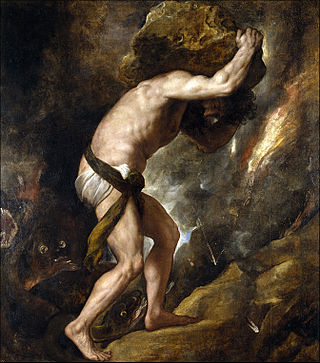
Sisyphus is an oil on canvas painting by the Venetian master Titian, made in 1548-1549. It is in the collection of the Museo del Prado, in Madrid.

Portrait of Jacopo Sannazaro, also known as Portrait of a Man, is an oil painting by the Venetian master Titian, dated to about 1513. It is part of the Royal Collection, and hangs in Buckingham Palace.

Portrait of the Physician Gian Giacomo Bartolotti da Parma, also known as Portrait of a Man, is an oil painting by the Venetian master Titian, made c. 1515-1518. The painting is in the collection of the Kunsthistorisches Museum, in Vienna.
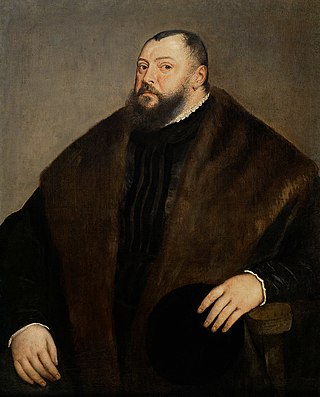
Portrait of John Frederick I, Elector of Saxony is an oil on canvas painting by the Venetian painter Titian, made in late 1550 or early 1551. The painting is in the collection of the Kunsthistorisches Museum, in Vienna.
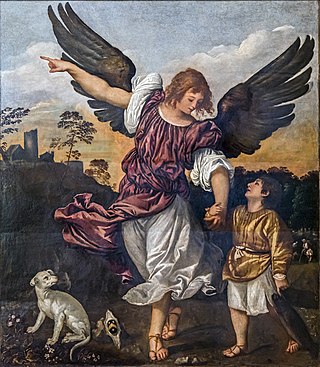
The Archangel Raphael and Tobias is an oil painting by Titian of Tobias and the Angel, dated to about 1512 to 1514, which is now in the Gallerie dell'Accademia in Venice. Another painting by Titian of the same subject, entitled Tobias and the Angel, dated to about 1540 to 1545, remains in the church of the Madonna dell'Orto in Venice.

The Pilgrims at Emmaus, also called the Supper at Emmaus, is a painting by Titian, made about 1533 or 1534, which hangs in the Louvre in Paris.
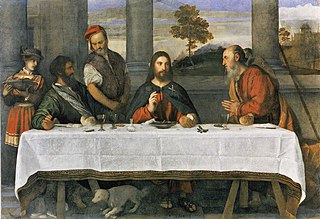
The Supper at Emmaus is the title shared by several similar works by Titian, two of which are discussed here. The first, made about 1534, is currently on long-term loan to the Walker Art Gallery, in Liverpool. The second, made about 1545 by Titian and his studio, is in the National Gallery of Ireland, in Dublin.

The Ecce Homo is a large oil on canvas painting by Titian, signed and dated 1543. It hangs in the Kunsthistorisches Museum, in Vienna. It is not to be confused with several smaller compositions by the same artist.
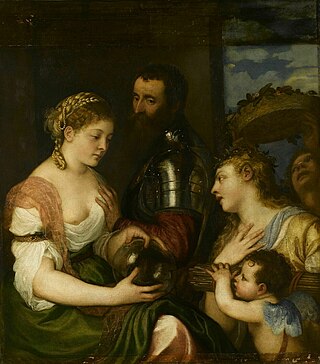
The Allegory of Marriage, also titled the Allegory of Separation, and formerly known as the Allegory of Alfonso d'Avalos, is an oil painting by Titian, made about 1530 to 1535, in the collection of the Louvre. There are several fairly early copies, done after Titian, including two in the Royal Collection.

Portrait of a Man with a Falcon, also called Portrait of a Man of the Cornaro Family with a Falcon or Giorgio Cornaro with a Falcon, is an oil on canvas painting by the Italian painter Titian. It is variously dated from the late 1520s to the 1540s. The painting is in the collection of the Joslyn Art Museum in Omaha.
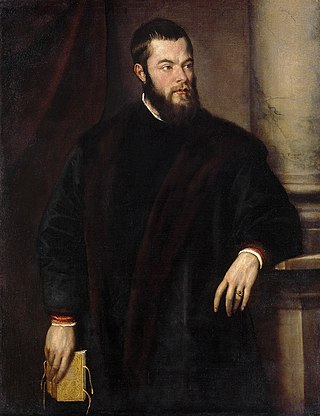
Portrait of Benedetto Varchi, also called Portrait of a Man, is an oil on canvas painting by Titian. It was painted c. 1536-1540, and hangs today in the Kunsthistorisches Museum, in Vienna.
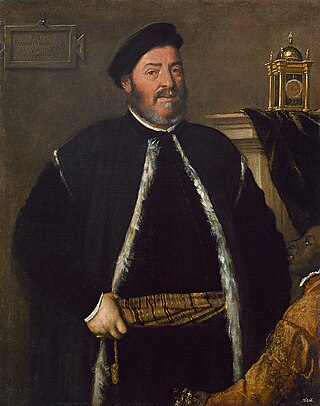
Portrait of Fabrizio Salvaresio is an oil painting by Titian. It is signed and dated 1558, and hangs today in the Kunsthistorisches Museum, in Vienna.
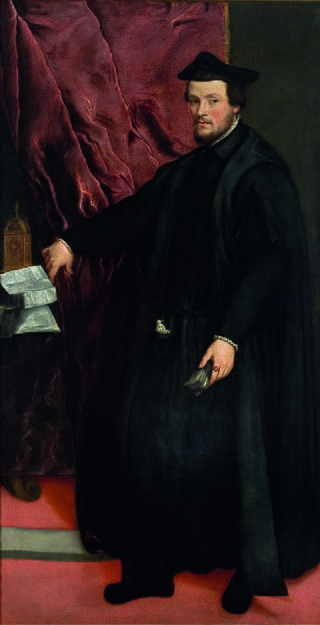
Portrait of Cardinal Cristoforo Madruzzo is an oil painting by Titian, signed and dated of 1552, which hangs in the São Paulo Museum of Art.

The Virgin and Child with Saints Stephen, Jerome and Maurice, also called the Virgin with Three Saints, is a religious painting by Titian which hangs in the Kunsthistorisches Museum in Vienna.

The Virgin and Child with Saint John the Baptist and an Unidentified Saint, also called the Virgin with Saint John the Baptist, Adored by a Donor, is a religious painting by Titian, dated to c. 1515-1520. It is currently on loan to the Scottish National Gallery, in Edinburgh.

The Baptism of Christ is an oil on panel religious painting by Titian, dated to c. 1512. It is held in the collection of the Capitoline Museums, in Rome.

Portrait of Doge Andrea Gritti is an oil painting by the Venetian master Titian, painted in the late 1540s, which is part of the collection of the National Gallery of Art in Washington, D.C. It is a portrait of Andrea Gritti, who was doge of Venice from 1523 to his death in 1538. A posthumous portrait, it is likely based on earlier depictions of the Doge, including one executed by Titian between 1537 and 1540 for Sala del Maggior Consiglio and destroyed during a fire in 1577.




















